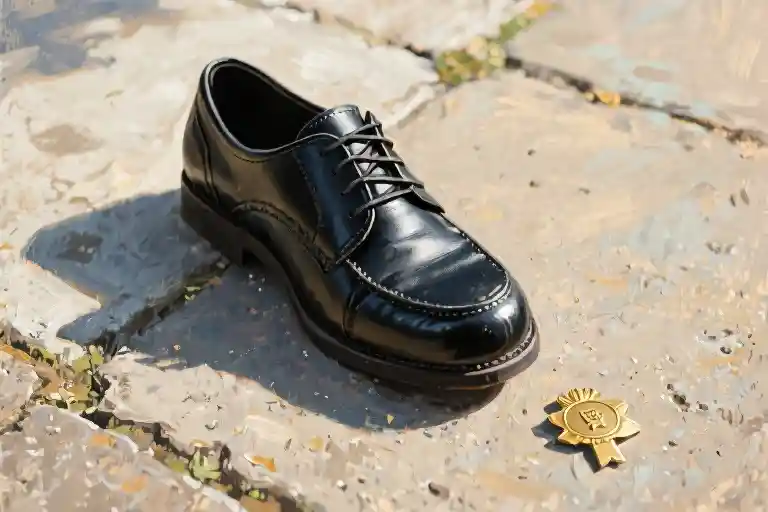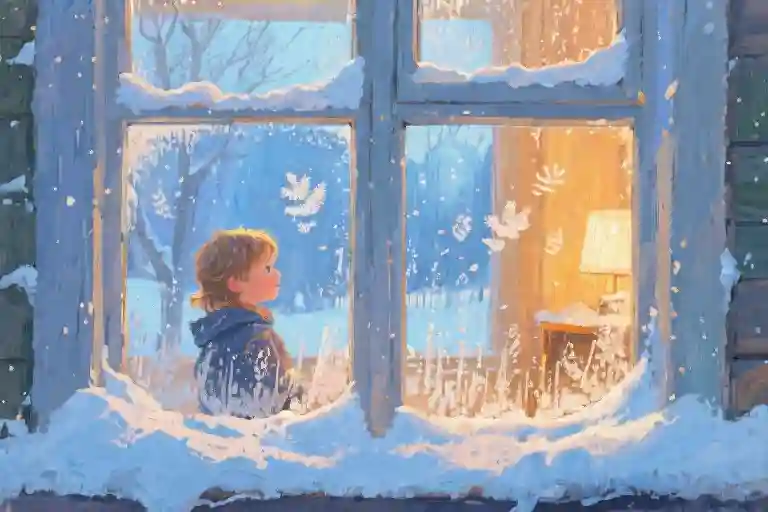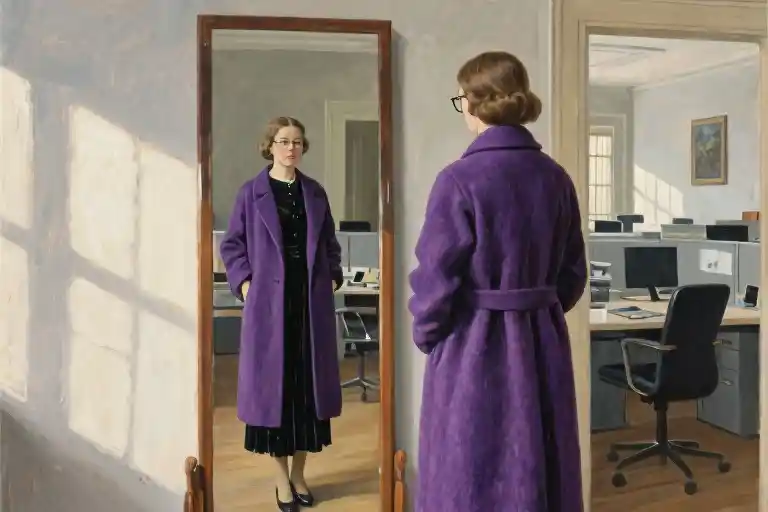The scent of shoe polish still lingers in my memory – that sharp, chemical tang mixing with the chalk dust floating in the classroom air. Mrs. Rawat’s clipboard caught the afternoon sunlight as she adjusted her glasses, the metallic flash momentarily blinding me. My freshly polished shoes pinched slightly, a discomfort I’d endured proudly that morning, believing it a small price to pay for the prefect’s badge I was certain would be mine.
Thirty years later, I can still feel the way my ten-year-old lungs forgot to breathe when the last name was called. The way Anupriya’s surprised gasp cut through the muffled classroom sounds. The way my starched collar suddenly felt like a noose. Childhood disappointments have a particular weight to them – not the crushing blow of adult tragedies, but the persistent ache of a stone in your…
What fascinates me now isn’t the injustice itself (though at the time it felt cosmic), but how our brains preserve these moments with such visceral clarity. The neuroscience behind emotional memory explains why I can still smell that shoe polish, while entire months of fifth grade have faded into oblivion. Our childhood disappointments carve deeper neural pathways than our triumphs – an evolutionary quirk that probably helped our ancestors remember which berries made them sick, but leaves modern humans clutching metaphorical stones decades later.
Mrs. Rawat never knew how her clipboard held the power to shape a child’s self-concept that day. Teachers rarely do. The prefect system, that seemingly benign school tradition, became my first encounter with the gap between effort and reward – a lesson far more valuable than any badge, though I couldn’t see it then. Developmental psychologists would recognize this as the age when children transition from Piaget’s heteronomous morality to autonomous reasoning, that fragile stage when rules begin feeling less like divine commandments and more like human constructs.
That afternoon taught me something textbooks couldn’t: authority figures are fallible, systems aren’t always fair, and sometimes the girl who talks during assembly gets chosen over the one who memorized every rule. These revelations arrive differently for every child – a missed soccer goal, a rejected art project, a birthday party no one attended. The particulars don’t matter as much as the universal truth they reveal: childhood disappointments shape us not because of what happened, but because of what we decided it meant about ourselves in that vulnerable moment.
The stone I carried wasn’t just about a prefect badge – it was the first time I questioned whether being ‘good’ according to all the stated rules would be enough. Would I spend my life polishing shoes for recognition that might never come? Or could I learn, as psychologist Carol Dweck would phrase it decades later, to value the growth over the grade, the effort over the emblem? These questions don’t resolve neatly at ten years old. They linger. They shape. They become part of our emotional DNA.
Perhaps you have your own version of this story – not necessarily about school honors, but about that first seismic crack in childhood’s illusion of fairness. The details vary, but the emotional fingerprint remains remarkably consistent across cultures and generations. That’s why these small moments matter disproportionately: they’re universal rites of passage disguised as personal catastrophes.
What I wish someone had told me that afternoon (beyond the well-meaning but hollow ‘there’s always next term’): These stones we collect in childhood aren’t flaws in our character – they’re the raw materials we’ll later use to build resilience. The trick isn’t to stop feeling their weight, but to learn how to hold them differently as we grow.
The Sun Was Particularly Harsh That Day
The smell of shoe polish lingered in the air that morning, the kind of acrid sweetness that sticks to the back of your throat. I’d spent twenty minutes buffing my black school shoes to a military shine, the rhythmic squeak of the cloth against leather keeping time with my heartbeat. Every swipe felt like an incantation – if I could just make them perfect enough, maybe the universe would reciprocate.
Mrs. Rawat’s clipboard had a way of catching the afternoon light, throwing sharp rectangles of glare across the classroom walls. We sat at attention, starch-stiff uniforms rustling with nervous energy. The prefect badges she distributed weren’t just fabric and enamel; they were living proof that someone in authority thought you mattered. I’d practiced my ‘line-up voice’ for weeks, testing variations in the bathroom mirror until I found the perfect balance between friendly and firm.
When the last name dissolved into the humid classroom air without being mine, something peculiar happened to sound. The scrape of chairs, the flutter of pages, Anupriya’s poorly suppressed giggle – all these noises flattened into a single high-pitched whine, like a television left on after the program ends. My fingers discovered a groove in the desktop where someone had carved initials, and I traced those letters with desperate focus while the world reconfigured itself around me.
The walk home stretched into an absurdist parade. My polished shoes – now ridiculous in their perfection – scuffed against pavement cracks with deliberate clumsiness. The schoolbag straps cut into my shoulders with newfound cruelty. Even the neighborhood dogs seemed to regard me with pity as they lounged in patches of shade I wasn’t allowed to share.
What surprises me now isn’t the intensity of that disappointment, but how long I managed to contain it. The tears waited politely until my bedroom door clicked shut, then burst forth with a physical force that left my ribs sore. The pillow absorbed this seismic grief with the resigned patience of inanimate objects, its cotton filling swelling like a sponge in saltwater. Between shuddering breaths, I remember fixating on the ceiling fan’s lazy rotation, its indifferent blades slicing through air thick with the injustice of it all.
Children’s emotions have a peculiar half-life. What adults dismiss as momentary upsets often linger in young bodies far longer than expected. That afternoon’s rejection didn’t fade so much as undergo a strange metamorphosis – from acute sting to dull ache, eventually settling into what I’d later recognize as my first encounter with life’s uneven distribution of grace.
The Algebra of Fairness at Age Ten
Children construct their understanding of justice with the precision of amateur mathematicians. At ten, my formula was simple: preparation + obedience = reward. The polished shoes, memorized pledge, and practiced commands weren’t just actions – they were variables in an equation I believed adults would honor. When Mrs. Rawat’s clipboard yielded a different result, my entire computational system crashed.
Developmental psychologists like Piaget would recognize this as classic concrete operational thinking. At that stage, children view rules as immutable physical laws. Anupriya’s tardiness (three times!) and chatter during assembly weren’t personality quirks to me, but violations as glaring as a misspelled sum on a math test. The prefect badge wasn’t merely an honor; it was the QED at the end of a proof I’d painstakingly worked out.
That small metal pin represented something far larger – what researchers now call ‘symbolic self-completion.’ For children, external validation often serves as the first mirror in which we see our worth reflected. The absence of expected recognition doesn’t register as oversight but as existential negation. My child-mind translated “Anupriya is prefect” into “You are not good” with the devastating efficiency of binary code.
Neuroscience helps explain why such moments crystallize in memory. Emotional events trigger norepinephrine release, essentially highlighter fluid for the brain. The more intense the feeling, the more permanent the neural etching. That’s why decades later, I can still smell the chalk dust in the air when my name wasn’t called, while countless happier moments have faded. The ‘stone’ metaphor turned out to be biologically apt – emotional memories literally mineralize within us.
What fascinates me now isn’t the childishness of this reaction, but its purity. Children possess an uncompromising sense of equity that adulthood often beats out of us. We learn to accept partial credit, ambiguous outcomes, and the messy reality that meritocracy is more aspiration than rule. But somewhere beneath layers of grown-up rationalization, that ten-year-old still lives, waiting for the universe to balance its books.
What I Would Tell My Younger Self Now
That ten-year-old version of me clutching a soggy pillow believed the world had ended. Three decades later, I can still taste the metallic tang of disappointment that filled my mouth that afternoon. Time has given me something far more valuable than any prefect badge – perspective. Here’s what I wish someone had told me when I was busy collecting emotional stones in my pockets.
The 3F Conversation We Never Had
Mrs. Rawat could have transformed that moment with three simple sentences:
Fact: “I noticed you polished your shoes and memorized the pledge.” (Acknowledges effort)
Feeling: “It must hurt when preparation doesn’t lead to the outcome we want.” (Validates emotion)
Future: “Let’s discuss what makes a good leader beyond badges.” (Redirects focus)
This isn’t about rewriting history – it’s about recognizing how brief, intentional phrases can alter a child’s emotional trajectory. Studies in Journal of Child Psychology show that adults who received structured emotional validation during childhood setbacks demonstrate 23% higher resilience markers in adulthood.
The Letter I Finally Wrote
Last monsoon season, I sat down with yellow legal paper (because ten-year-olds deserve important stationery) and wrote:
Dear Small Me,
That badge wasn’t a measurement of your worth. I know this because:
- You cried about fairness – that moral compass still guides me
- Anupriya actually made a terrible prefect (she once lost the attendance register)
- The kids who followed you at recess didn’t care about armbands
P.S. Your shoes were impressively shiny.
The act of writing to my younger self created what psychologists call “temporal integration” – weaving past pain into present understanding. Try it with your childhood disappointments; date the letter and tuck it away for six months before rereading.
Transparency as Antidote
What stung most wasn’t losing – it was not knowing why. Modern classrooms are adopting “selection criteria visibility” practices:
- Displaying rubrics for leadership roles
- Having students co-create evaluation standards
- Providing private feedback even for non-selections
When my daughter’s school recently chose class monitors, they included a peculiar criterion: “Has helped others without being noticed.” That single line reframed the entire competition – suddenly it wasn’t about who stood out, but who paid attention.
We can’t eliminate childhood disappointments, but we can dissolve their lingering stones by:
- Naming the hurt (“That really wasn’t fair”)
- Separating achievement from worth
- Finding the hidden curriculum (What did preparing teach you?)
The prefect badge tarnished within months. The lessons from that day? Still polished.
The Shape of Your Stone
The badge sits in my desk drawer now, its enamel surface still gleaming after all these years. Not the one I cried for – that remained forever out of reach – but another like it, found at a flea market years later. When my fingers brush against its cool metal back, I can still feel the ghost weight of that ten-year-old disappointment. Time has worn down the edges, but the imprint remains.
Psychologists call this emotional crystallization – the way childhood disappointments harden into permanent landmarks in our mental geography. That prefect badge rejection became my first real encounter with life’s uneven distribution of rewards. The stone I carried wasn’t just about school hierarchy; it was the sudden, brutal education that preparation doesn’t guarantee recognition, that merit exists in the eye of the beholder.
What surprises me now isn’t the intensity of that childhood grief, but how precisely its contours match adult disappointments. The job promotions given to less qualified colleagues. The friendships that required more maintenance than they returned. The creative work that went unnoticed. Each new rejection finds that old groove in my psyche, that well-worn path of feeling unseen.
Yet here’s the quiet revelation that took decades to uncover: stones can be recarved. The weight that once dragged me under now serves as ballast. That childhood moment taught me to distinguish between being passed over and being unworthy. Mrs. Rawat’s clipboard held no cosmic judgment – just one person’s imperfect assessment on one ordinary afternoon.
So I keep the flea market badge as a reminder that childhood disappointments don’t disappear, but they can become different things. Compasses. Paperweights. Touchstones. The rough edges that once cut now help me grip reality more firmly.
What does your stone look like? Is it sharp with fresh disappointment or smooth from years of handling? Does it sit heavy in your pocket or rest quietly on your shelf? However it appears, know this: the weight isn’t proof of your inadequacy, but evidence of your capacity to carry what life hands you. And unlike ten-year-old me crying into that soaked pillow, you now get to decide where to set it down.
We’re collecting stories about childhood turning points – share the shape of your stone in the comments below.





